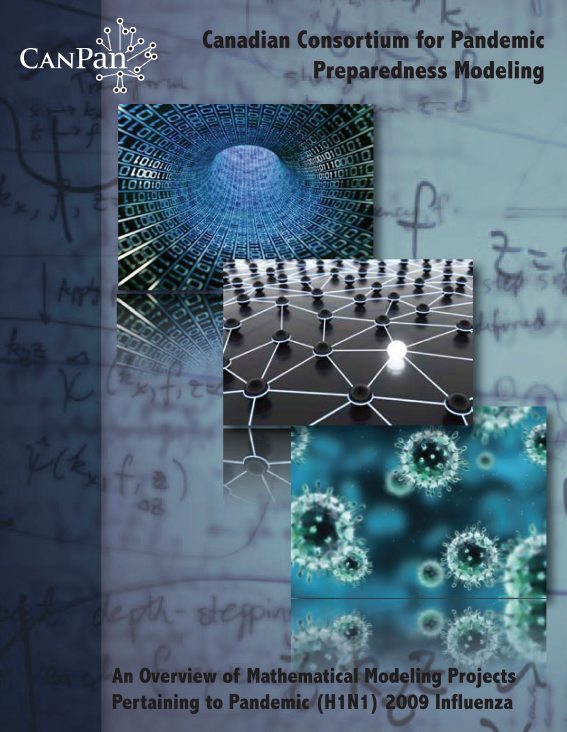Instigated by the need to develop predictive and integrated pandemic preparedness plans, collaboration began among a unique, multidisciplinary group of pandemic preparedness experts from across Canada. Collectively, this group was referred to as the Canadian Consortium for Pandemic Preparedness Modeling/Consortium Canadien de modélisation pour la preparation du plan pandémie (CanPan). Shortly after its formation, CanPan was called into action to address the pandemic outbreak of influenza A (H1N1) in March 2009.
Although preemptive research is important, it is also imperative that Canada’s top researchers are accessible and tactically coordinated at the advent of a pandemic to rapidly adapt and develop strategies as the pandemic progresses. This pandemic tested Canada’s ability to respond in a coordinated and efficient way.
The use of mathematical modeling of complex systems in public health decision-making has been increasingly recognized as a strong decision support tool for public health policy design. When the first wave of pH1N1 appeared in the spring of 2009, CanPan was mobilized to acquire early data, identify knowledge gaps and address the questions. These novel projects addressed topics pivotal to the containment of the initial outbreak of pH1N1 in Mexico, and later, to the containment of its global reemergence in the fall of 2009.
The results of this research have been published in high-ranking journals (~30 peer-reviewed publications), reported to the provincial ministries of health and municipal governments and presented in national and international forums.
This was an opportunity to demonstrate a true willingness and ability to strategically collaborate during an emergency situation. Amid uncertainty, we were able to optimize our nation’s mathematical modeling resources, as well as provide a ripe training ground for tomorrow’s modeling leaders.
